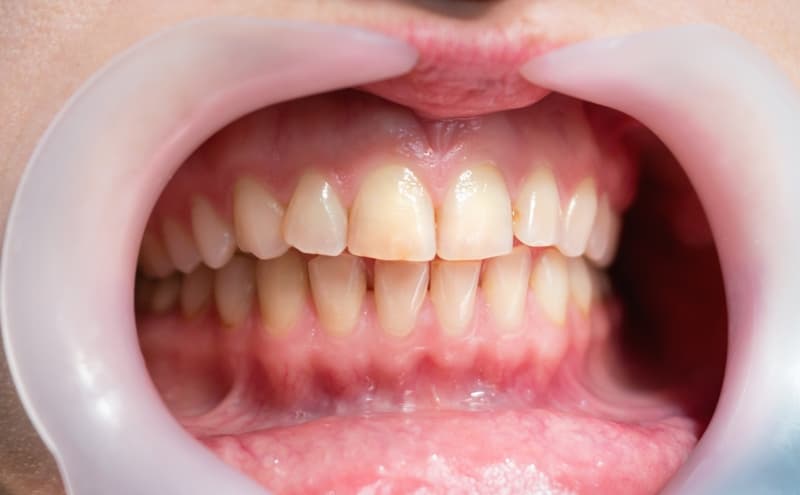Gingivectomy is a dental procedure used to remove excessive or diseased gum tissue. Knowing when to opt for this procedure can be crucial in maintaining your oral health and achieving a more balanced smile. If you’re struggling with gum disease, overgrown gums, or difficulty keeping your gums healthy, a Gingivectomy (Gum Tissue Removal) may be the solution. Recognizing the signs that indicate the need for this treatment can help you take timely action to preserve your gum health and overall well-being.
Persistent Gum Disease That Doesn’t Improve with Traditional Treatments:
One of the primary reasons to consider a gingivectomy is the failure of non-surgical treatments to address persistent gum disease. If you’ve tried regular cleaning, deep cleanings, or antibiotics without success, a gingivectomy can help by removing diseased tissue and allowing for better access to the teeth for cleaning and healing.
-
Ineffective results from deep cleanings or medications
-
Continued gum inflammation and infection despite treatment
-
Deepening gum pockets that trap bacteria
-
Chronic bleeding or tenderness in the gums
Excess Gum Tissue Leading to Poor Oral Hygiene:
Gum overgrowth, also known as gingival hyperplasia, can cause excess gum tissue to cover the teeth, making it difficult to clean the gums effectively. Gingivectomy can remove this excess tissue, ensuring that your gums and teeth are more accessible for proper cleaning, which helps prevent further oral health issues such as cavities and gum infections.
-
Gums covering parts of your teeth, making cleaning difficult
-
Difficulty brushing or flossing between your teeth
-
Frequent plaque buildup around the gum line
-
Gums that bleed when brushing or flossing
A Gummy Smile Affecting Your Confidence:
A gummy smile, where an excessive amount of gum is visible when you smile, can be a cosmetic concern for many people. Gingivectomy can be an effective way to reshape the gum line, removing excess gum tissue and revealing more of your teeth, which can improve your appearance and boost your confidence.
-
Excessive gum tissue visible when smiling
-
Uneven or asymmetrical gum lines
-
Feeling self-conscious about the appearance of your smile
-
Looking for a solution to improve the aesthetics of your gums
Difficulty Eating or Speaking Due to Gum Overgrowth:
Excessive gum tissue can not only affect your oral hygiene but also interfere with normal eating and speaking. If you’re experiencing difficulty chewing food or pronouncing certain words because of overgrown gums, a gingivectomy can help by restoring a more comfortable and functional gum line, improving both your oral health and quality of life.
-
Gum tissue interfering with biting and chewing
-
Discomfort while speaking or pronouncing certain sounds
-
Difficulty with regular activities like eating or drinking
-
Feeling like your gums are in the way during daily functions
Preparation for Restorative or Cosmetic Dental Procedures:
In some cases, Gum Tissue Removal is necessary as part of a comprehensive treatment plan for other dental procedures. If you are considering dental implants, crowns, or veneers, excess gum tissue can obstruct the placement of these restorations. Gingivectomy helps create a better foundation for these treatments, ensuring that the results are more effective and longer-lasting.
-
Need for gum tissue removal before crowns or implants
-
Preparing for cosmetic dental procedures like veneers
-
Need for a more even gum line for successful orthodontic work
-
Ensuring a proper fit for dental restorations
Long-Term Gum Health and Prevention of Periodontal Disease:
If you’re at risk of developing periodontal disease or have been diagnosed with early-stage gum disease, gingivectomy can help manage and prevent the progression of the condition. By removing damaged tissue and reducing gum pockets, the procedure helps reduce the risk of further gum complications, contributing to better long-term gum health.
-
Preventing the progression of gum disease to more severe stages
-
Reducing the depth of gum pockets that harbor bacteria
-
Promoting the healing of the gums and reattachment to teeth
-
Lowering the risk of bone loss and tooth mobility
Knowing when to opt for gingivectomy can be a critical step in maintaining both your gum health and overall oral hygiene. Whether for medical, functional, or cosmetic reasons, this procedure can restore balance and function to your gums, helping you enjoy a healthier, more confident smile. If you recognize any of these signs, it may be time to consult your dentist or periodontist to discuss if gingivectomy is the right solution for you.

